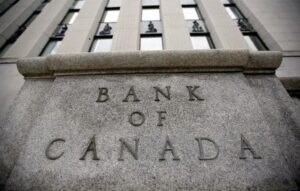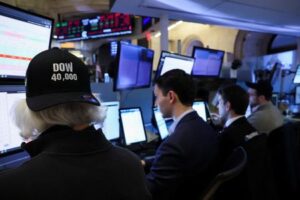By Chuck Mikolajczak
NEW YORK (Reuters) -The yen fell against the dollar on Tuesday, giving back a chunk of its sharp gains in the prior session sparked by suspected intervention by Japanese authorities, while U.S. economic data on employment costs boosted the dollar.
The yen weakened 0.88% against the greenback at 157.73 per dollar, but was still off its 34-year low of 160.245 hit on Monday when traders say yen-buying intervention by Tokyo drove a strengthening of about five yen.
For the month, the yen is down 4.04% against the dollar, on track for its biggest monthly decline since February 2023.
The dollar index gained ground after economic data showed U.S. labor costs increased more than expected in the first quarter amid a rise in wages and benefits, confirming the surge in inflation early in the year that will likely delay a much- anticipated interest rate cut later this year.
“The trend is still higher for dollar/yen, we really have to see either policy divergence sort of converge a bit, have the U.S. bond market catch a more sustainable bid that takes dollar yen further off the highs, maybe produces a couple of weekly lower lows or some change in rhetoric from the BOJ, but I think it has to be the latter,” said Erik Bregar, director of FX and precious metals risk management at Silver Gold Bull in Toronto.
Japanese officials may have spent some 5.5 trillion yen ($35.05 billion) in supporting the currency on Monday, Bank of Japan data suggested on Tuesday.
The Bank of Japan (BOJ) on Tuesday left its plan for monthly bond buying unchanged for May. Japan’s government bond (JGB) investors are looking for clues on the timing of a taper, which will lead to higher, more attractive yields, supporting the yen.
This comes as the Fed begins its two-day monetary policy meeting on Tuesday, where it is widely expected to hold rates at 5.25%-5.5%, while comments from Chair Jerome Powell will be closely watched for signs of the central bank’s policy path in light of recent data on inflation and the labor market.
Markets have continued to push back expectations for the timing of a rate cut this year, with odds for a cut in September of at least 25 basis points (bps) just slightly below 50%, according to CME Group’s FedWatch Tool.
The dollar index gained 0.52% at 106.24, with the euro down 0.42% at $1.0674. Sterling weakened 0.49% at $1.2499.
The dollar index was up 1.7% for April and poised for its biggest monthly gain since January. The euro is down 1.11% for the month and Sterling is down 1.02%, on track for its biggest monthly drop since September.
Bank of America technical strategist Paul Ciana said in a note that a supported and stronger US dollar is the firm’s base case, and they still advocate for buying the greenback dips “in anticipation of another leg higher” in the second quarter.
French and eurozone inflation data released on Tuesday boosts confidence the European Central Bank (ECB) will be able to start lowering interest rates in early June, said ECB policymaker Francois Villeroy de Galhau, while European Central Bank policymaker Pablo Hernandez de Cos said the ECB should start cutting interest rates in June if inflation continues its gradual decline as expected.
Euro zone inflation held steady as expected in April but a crucial indicator on underlying price pressures slowed.
(Reporting by Chuck Mikolajczak; editing by Philippa Fletcher and Will Dunham)





